Page 2: Testing Methodology, Benchmarks
<B>Testing Methodology</B>:
I testing this board again my IS7-E, as that is its direct competitor. Since this is a reference board, I did not do any overclocking tests.
<B>Benchmarks</B>:
All components will be the exact some for both setups, except for the board.
P4 2.4C
512MB Crucial PC 3200
Leadtek Geforce FX 5600
WD 80GB 8MB.
DVD and CDRW
Win2k SP4
DET 44.03
Latest Intel INF drivers And latest SiS Drivers
For all benchmarks, the grey denotes the IS7-E while the red denotes the 648FX reference board. All tests that have graphics were run at 640x480 at low detail if possible. The IS7-E is running in Dual Channel mode, as there is no reason to test it without something it very well can do.
<center>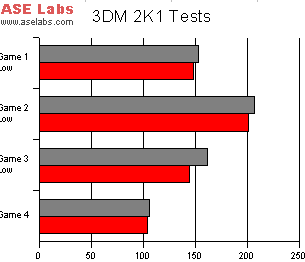 </center>
</center>
First up we have 3DMark 2001. I am showing you the individual tests. If you remember, the three games have low detail tests which really stresses the CPU subsystem and really does a nice job of testing a motherboard out. As you can see, the Intel board has a slight lead over the SiS board.
<center>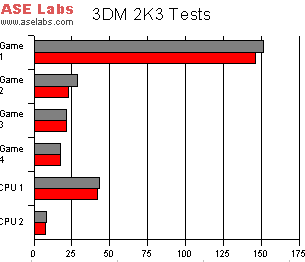 </center>
</center>
3D Mark 2003 doesn't change the picture, the Intel board is still in the lead. The SiS still shows a strong fight for a single channel board.
<center>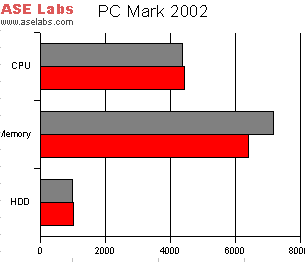 </center>
</center>
In all of PC Mark's tests, the SiS wins. All except the memory tests which is understandable due to the single memory bandwidth.
<center>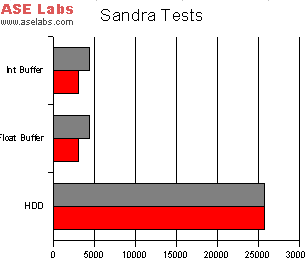 </center>
</center>
The Sandra scores paint the same picture as PC Mark. The Hard Drive performance is pretty much equal while the memory scores are in Intel's favor.
<center>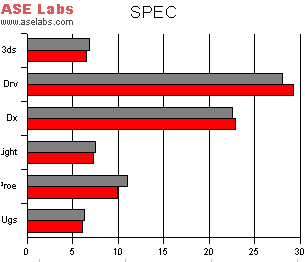 </center>
</center>
Spec is a professional suite of programs. In this benchmark, we see that the SiS board actually wins a few. I consider this a tie really.
<center>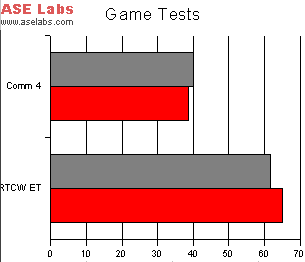 </center>
</center>
Another tie, the SiS wins an OpenGL game while the Intel wins a DirectX game.
<center>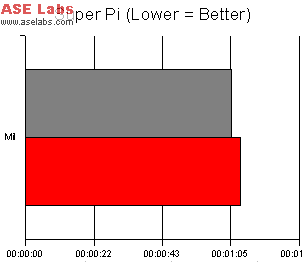 </center>
</center>
In Super Pi, the Intel board retains the leader position. All this is most likely due to the extra memory bandwidth.
I testing this board again my IS7-E, as that is its direct competitor. Since this is a reference board, I did not do any overclocking tests.
<B>Benchmarks</B>:
All components will be the exact some for both setups, except for the board.
P4 2.4C
512MB Crucial PC 3200
Leadtek Geforce FX 5600
WD 80GB 8MB.
DVD and CDRW
Win2k SP4
DET 44.03
Latest Intel INF drivers And latest SiS Drivers
For all benchmarks, the grey denotes the IS7-E while the red denotes the 648FX reference board. All tests that have graphics were run at 640x480 at low detail if possible. The IS7-E is running in Dual Channel mode, as there is no reason to test it without something it very well can do.
<center>
 </center>
</center>First up we have 3DMark 2001. I am showing you the individual tests. If you remember, the three games have low detail tests which really stresses the CPU subsystem and really does a nice job of testing a motherboard out. As you can see, the Intel board has a slight lead over the SiS board.
<center>
 </center>
</center>3D Mark 2003 doesn't change the picture, the Intel board is still in the lead. The SiS still shows a strong fight for a single channel board.
<center>
 </center>
</center>In all of PC Mark's tests, the SiS wins. All except the memory tests which is understandable due to the single memory bandwidth.
<center>
 </center>
</center>The Sandra scores paint the same picture as PC Mark. The Hard Drive performance is pretty much equal while the memory scores are in Intel's favor.
<center>
 </center>
</center>Spec is a professional suite of programs. In this benchmark, we see that the SiS board actually wins a few. I consider this a tie really.
<center>
 </center>
</center>Another tie, the SiS wins an OpenGL game while the Intel wins a DirectX game.
<center>
 </center>
</center>In Super Pi, the Intel board retains the leader position. All this is most likely due to the extra memory bandwidth.
